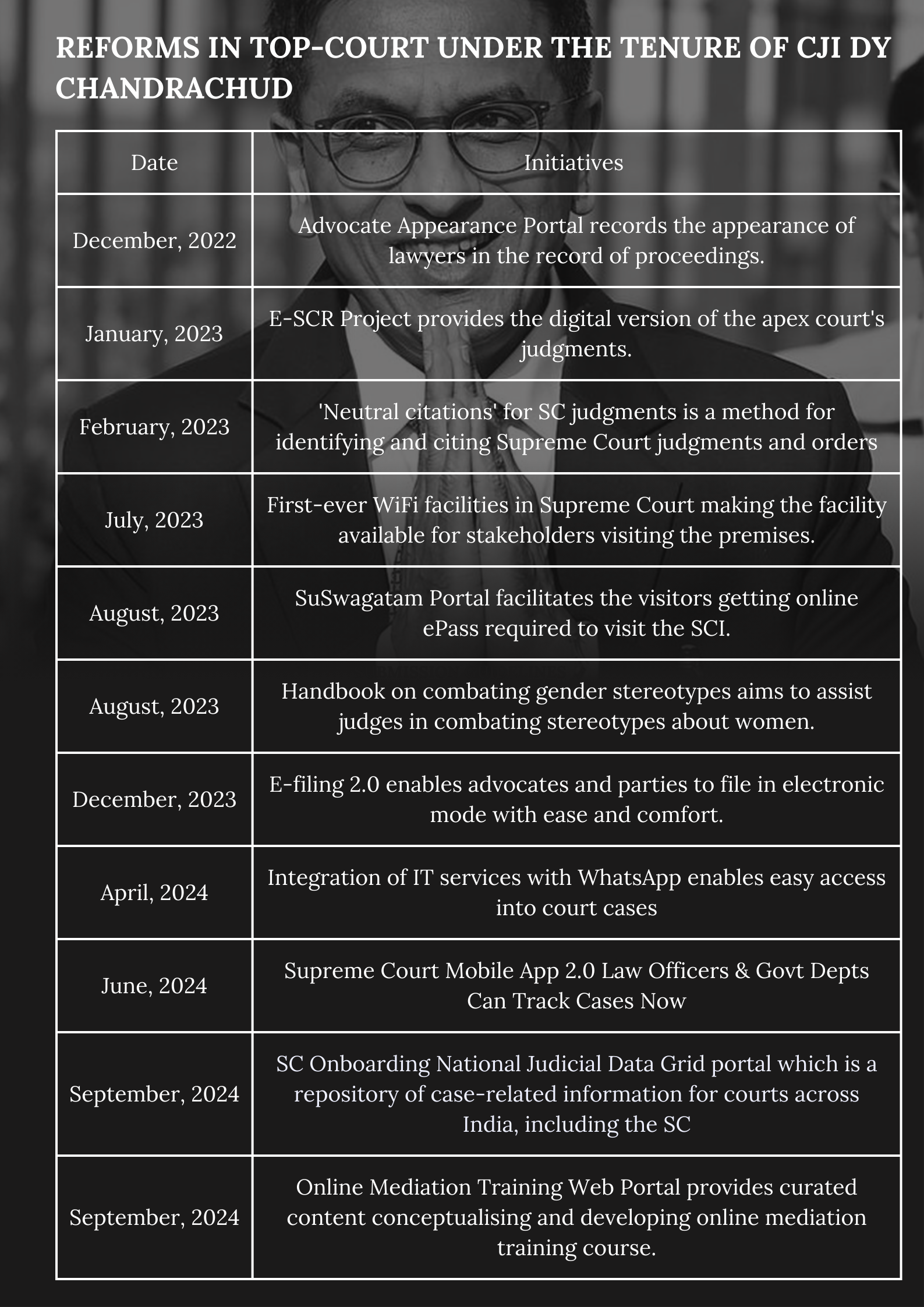
Chief Justice of India, DY Chandrachud, after his swearing-in as the 50th Chief Justice promised to serve the nation as his foremost priority. He said, “We will protect all citizens of India, whether through technological advancements, registry reforms, or judicial reforms.” Chandrachud was true to his words of the later part as he made technological reforms to aid transparency in the judicial system.
“Sunlight is the best disinfectant,” Justice DY Chandrachud (now Chief Justice) stated while advocating for the live streaming of court proceedings. This principle has been central to the administration of justice under his leadership, with transparency and accessibility serving as the two foundational pillars.

Justice Chandrachud has initiated several innovative portals, including “SuSwagatam,” “E-filing 2.0,” “Supreme Court Mobile App 2.0,” “Advocate Appearance Portal,” and the “E-SCR Project.” He has also integrated IT services with WhatsApp to enhance access to justice.
In 2022, Chandrachud rejected the pre-vaginal test in rape cases, deeming sexual history irrelevant and a violation of the dignity of survivors. He introduced the Handbook on Combating Gender Stereotypes to help judges and legal professionals recognize and challenge outdated stereotypes about women, noting that many terms used in legal discussions reflect archaic, patriarchal views.
Additionally, he implemented a reliable methodology for identifying and citing Supreme Court judgments known as the Neutral Citation System. Phase I covered judgments from January 1, 2014, to July 5, 2023, and Phase II will include all reported judgments from January 1, 1950, to December 31, 2013.
The Supreme Court also adopted the National Judicial Data Grid (NJDG) portal, which serves as a national repository for data on cases that are instituted, pending, and disposed of. This initiative enhances transparency and accountability within the Indian judicial system by making case data publicly accessible.
Justice Chandrachud’s tenure has focused on reforms that leverage technology to promote transparency and access to justice. However, discussions around structural reforms, such as changes to the collegium system, continue to be debated within the legal community.
Justice Chandrachud took office as CJI on November 8, 2022, and is set to step down on November 10, 2024. DY Chandrachud has had the longest tenure as Chief Justice since 2012. He has now recommended Justice Sanjiv Khanna to be the next chief justice which has been accepted by the President of India.
Justice Khanna will take his oath on November 11 and will serve as the 51st CJI for just over six months, concluding his term on May 13, 2025.


